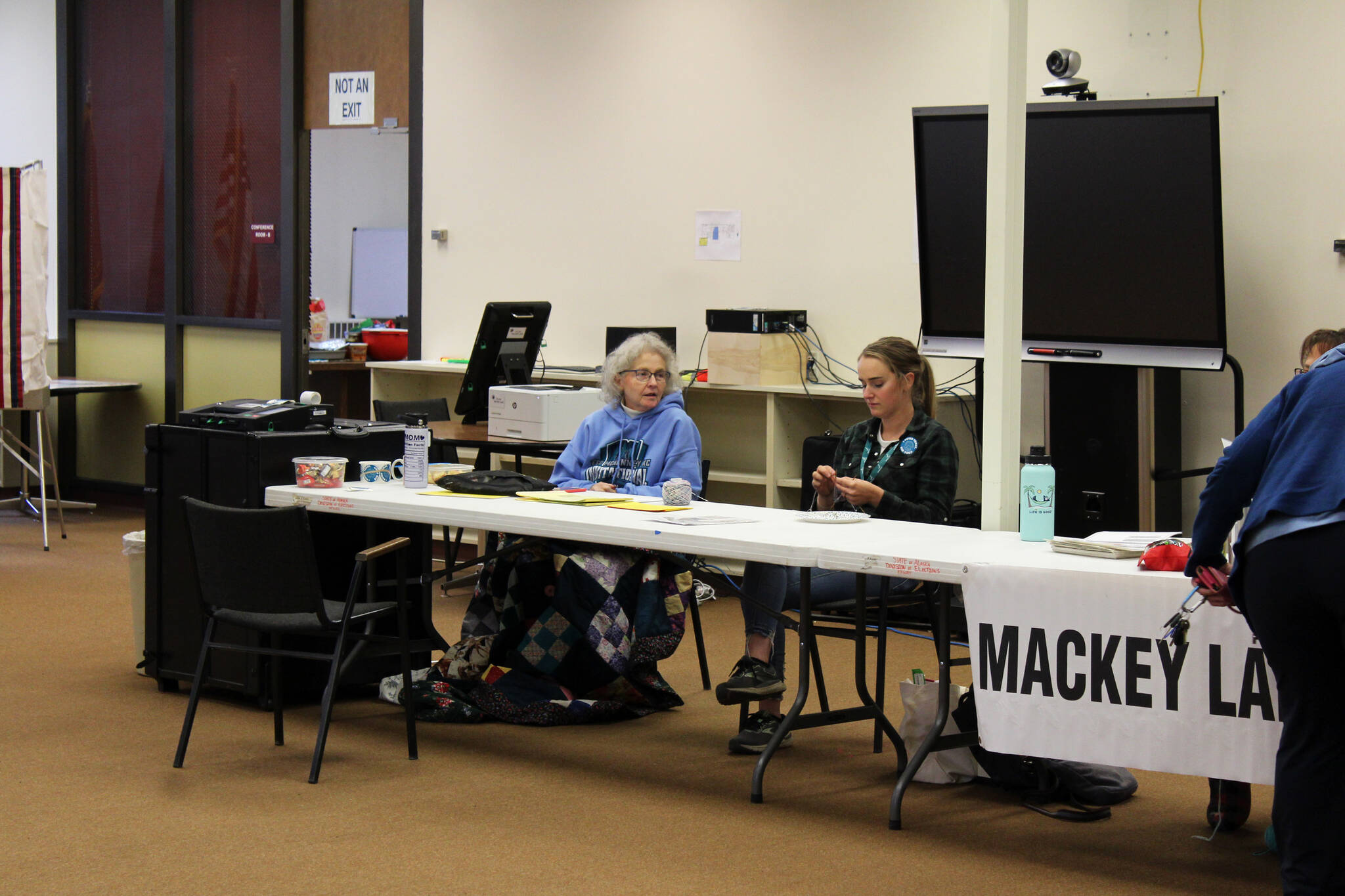Kenai Peninsula Borough Mayor Charlie Pierce had something to say Tuesday about the number of people who voted in the borough’s Oct. 5 municipal elections.
“I’d like to say congratulations, Kenai Peninsula. The recent voter response participation, I heard today, (was) 11.84%,” Pierce said to the Kenai Peninsula Borough Assembly.
Up for grabs were seats on city councils, the Kenai Peninsula Borough School District Board of Education, the borough assembly and service area boards.
The borough as a whole saw a voter turnout rate of about 11.8% among roughly 52,600 registered voters. Kenai Peninsula Borough Clerk Johni Blankenship said Tuesday that voter turnout is generally low in the borough’s municipal elections, but that turnout in the Oct. 5 election was “the lowest turnout (she has) ever seen.”
Turnout at individual borough precincts ranged from 1.23% in Tyonek, where five voters out of 407 registered cast ballots, to 26.04% in Moose Pass, where 100 out of 384 registered cast ballots.
Alex Koplin, of local voter advocacy group Kenai Peninsula Votes, said Wednesday that he attributes low voter turnout among borough precincts partially due to voter apathy, but also to a lack of “hot-ticket” ballot items. Some precincts, for example, had ballots with only an uncontested service area board up for consideration.
In the borough’s Nikiski precinct, for example, about 105 of 2,168 registered voters cast ballots — about 4.84%. On the Nikiski ballot, however, were five uncontested candidates running for seats on service area boards, including the Nikiski Fire Service Area Board, the Nikiski Senior Service Area Board and the North Peninsula Recreation Service Area Board.
Koplin said the irony, however, is that the fewer people there are voting, the more weight someone’s vote carries. He called the low voter turnout “sad” in light of practices the borough has to make voting in elections simple.
“We make it easy to vote,” Koplin said.
Voter turnout was also low in Kenai and Soldotna city elections.
Soldotna saw the lowest regular election voter turnout in almost 10 years at about 11.65%. Unlike in Kenai, Soldotna has designated city council seats. Of the three seats up for grabs, two saw contested races. After polls closed on Election Day, Seat C candidate Micah Shields was ahead of incumbent Jordan Chilson by a single vote.
Review and count of absentee, questioned and special needs ballots ultimately pushed Chilson ahead by just 36 votes.
Over in Kenai, five candidates were vying for two seats on the city council and reported a voter turnout of around 12.15%.
Kenai City Clerk Jamie Heinz said she similarly attributes low voter turnout to multiple factors, including automatic voter registration practices implemented at the state level. Alaska voters approved Ballot Measure 1 in 2016, according to the Alaska Department of Revenue. That measure automatically registers eligible people to vote when they apply for an Alaska Permanent Fund dividend, unless the applicant opts out.
“This law went into effect on March 1, 2017 and has increased our number of registered voters without the applicant taking specific action to register to vote,” Heinz said.
She similarly said that voter turnout in city elections often depends on what is on the ballot. In 2020 and in 2014, for example, Kenai saw voter turnout rates of 23.7% and 28%, respectively. Those years were also mayoral election years. In 2017, when the issue of allowing commercial marijuana establishments in the borough was on the ballot, 28.1% of voters cast ballots.
As people begin brainstorming ways to boost turnout during future borough elections, Pierce said he hopes to see the elections advertised more and for turnout rates to be higher than 26%.
“Next year, same time, same place, there will be a vote (and) there’s important decisions to be made,” Pierce said.
Results from the Oct. 5 municipal election can be found on the borough’s website.
Reach reporter Ashlyn O’Hara at ashlyn.ohara@peninsulaclarion.com.

